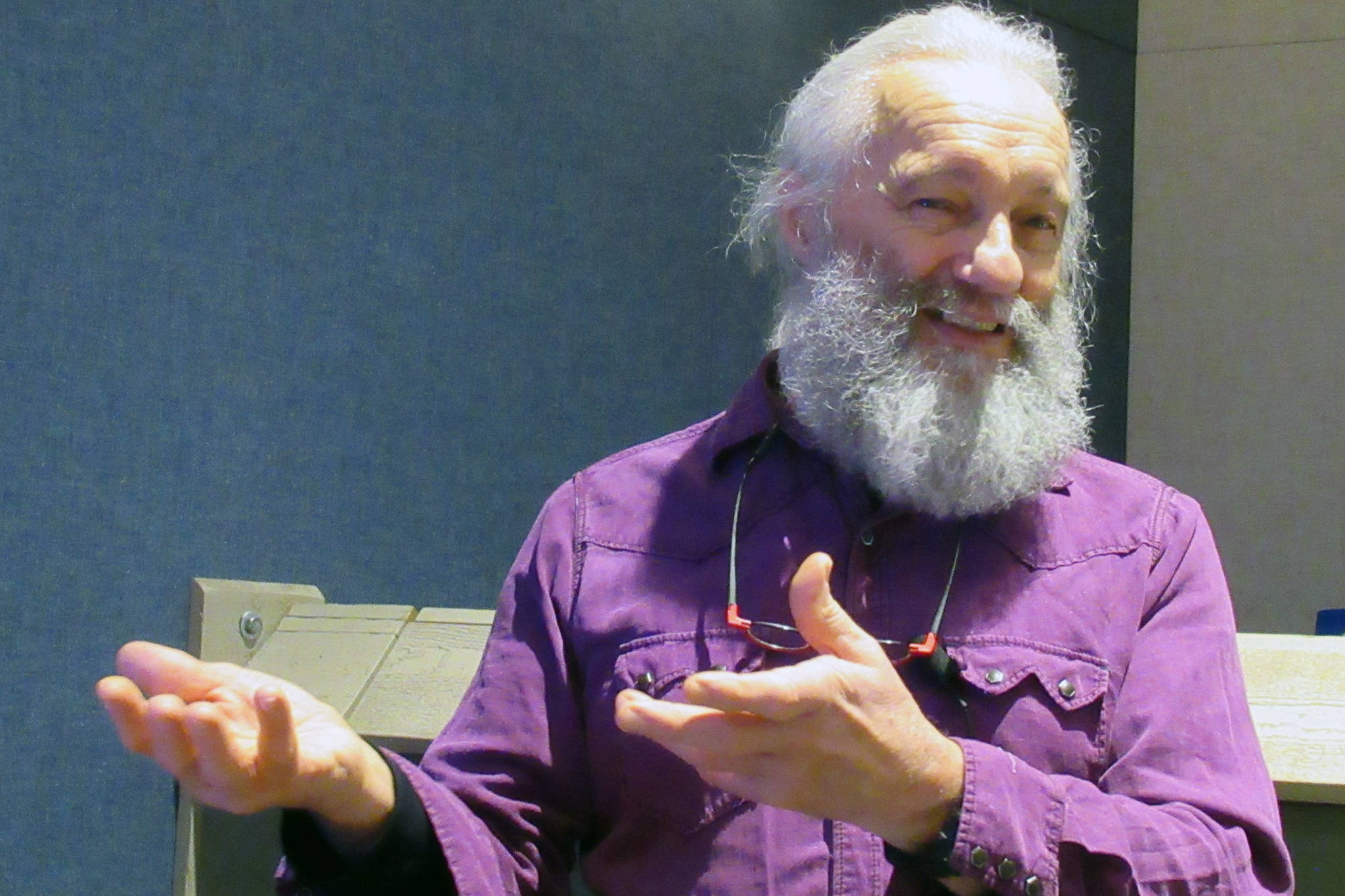It’s estimated there are fewer than 50 Gobi bears on the planet and LaVern Beier has touched three of them.
Beier, a retired bear researcher for the Alaska Department of Fish and Game, went to the Gobi Desert in Mongolia last May to assist with the Gobi Bear Project, an organization that helps promote conservation and protection of the world’s most endangered bear.
“Based on everything I knew, I thought we’d be lucky if we captured a bear,” Beier said in an interview this week before his lecture at the Mendenhall Glacier Visitor Center. “When we captured one, I was all choked up. I got to pull blood from a Gobi bear, pull a tooth. To touch an animal that could be going extinct. That just struck a different chord.”
Beier was the latest presenter in the ongoing Fireside Lecture series Friday night. The free, public talks happen at 6:30 and 8 p.m. Fridays at the visitor center.
[Fireside Lecture offers crash course in ocean governance]
Gobi bears are a subspecies of brown bear that live in the Gobi Desert. They are considerably smaller than their North American counterparts —the largest one ever caught weighed 260 pounds, while a brown bear can weigh up to 1,500 pounds — and have a fuzzy, reddish fur that makes them look a bit like golden retrievers.
The dwindling population is because of climate change, Beier said. The Gobi Desert typically gets about 7 inches of rain annually, he said, but lately that has decreased to 1 inch.
There are no Gobi bears in captivity.
He told the crowd about how he came to be involved with the Gobi Bear Project’s efforts and told stories from his trip around Mongolia and the world’s fifth-largest desert.
“It was an epic adventure,” Beier said.
That’s particularly problematic for the bears because they mainly subsist on wild rhubarb and onions.
Over the course of Beier’s 43-year career with the department of fish and game he caught more than 1,000 bears, was the first researcher to put a GPS device on a brown bear and in the early ’00s devised a device that could snare bear hair from a single animal to help researchers study DNA.
“I’ve touched bears most of my adult life,” Beier said.
His extensive background with bears in the lush environments of Southeast Alaska are why he received the call to pitch in with efforts to study the rare creatures.
[Bear breaks into the hospital]
“For me to get the call, I felt honored and privileged,” Beier said. “I just felt incredibly honored and privileged. It was totally pro bono.”
Once abroad, Beier had it impressed upon him how important the endangered animals known as Mazaalai in Mongolian are to Mongolians.
He and his team members met with elected officials and dignitaries before heading into the desert.
Along the way, Beier had to contend with travel buddies who spoke little or no English, “icky” stand-up outhouses and finally an arid, bare environment not ideally suited for his hair-catching traps.
“Does that look like bear country to you?” Beier asked while gesturing toward a slide of an almost Martian landscape.
To further complicate the situation, Beier could not set his devices up near bear-feeding stations that provide food pellets to bears because Gobi Bear Project researchers hypothesized male bears were keeping females from the feeders.
A large reason for Beier’s involvement for the program was to assist in finding genetic evidence of whether there are female bears unknown to researchers. Beier said a recent count came up with 16 males to only nine females, and researchers are hopeful those lopsided tallies omitted females kept away from the feeders.
Using scavenged brush and rocks, Beier set up traps that should be able to catch enough hair to allow researchers in Canada to analyze DNA and determine if and when female bears have had cubs.
The team also experimented with placing different lures and scents out to find out what appeals to the bears. Currently, that’s unknown, but Beier said it’s hoped the recent trip will yield some results.
“These bears show no interest in meat,” Beier said.
While the majority of Beier’s presentation focused on the absolute scarcity of Gobi bears, he did end on a positive note.
The bears are still reproducing.
“The positive is the females have cubs,” Beier said.
• Contact arts and culture reporter Ben Hohenstatt at 523-2243 or bhohenstatt@juneauempire.com. Follow him on Twitter @BenHohenstatt.

